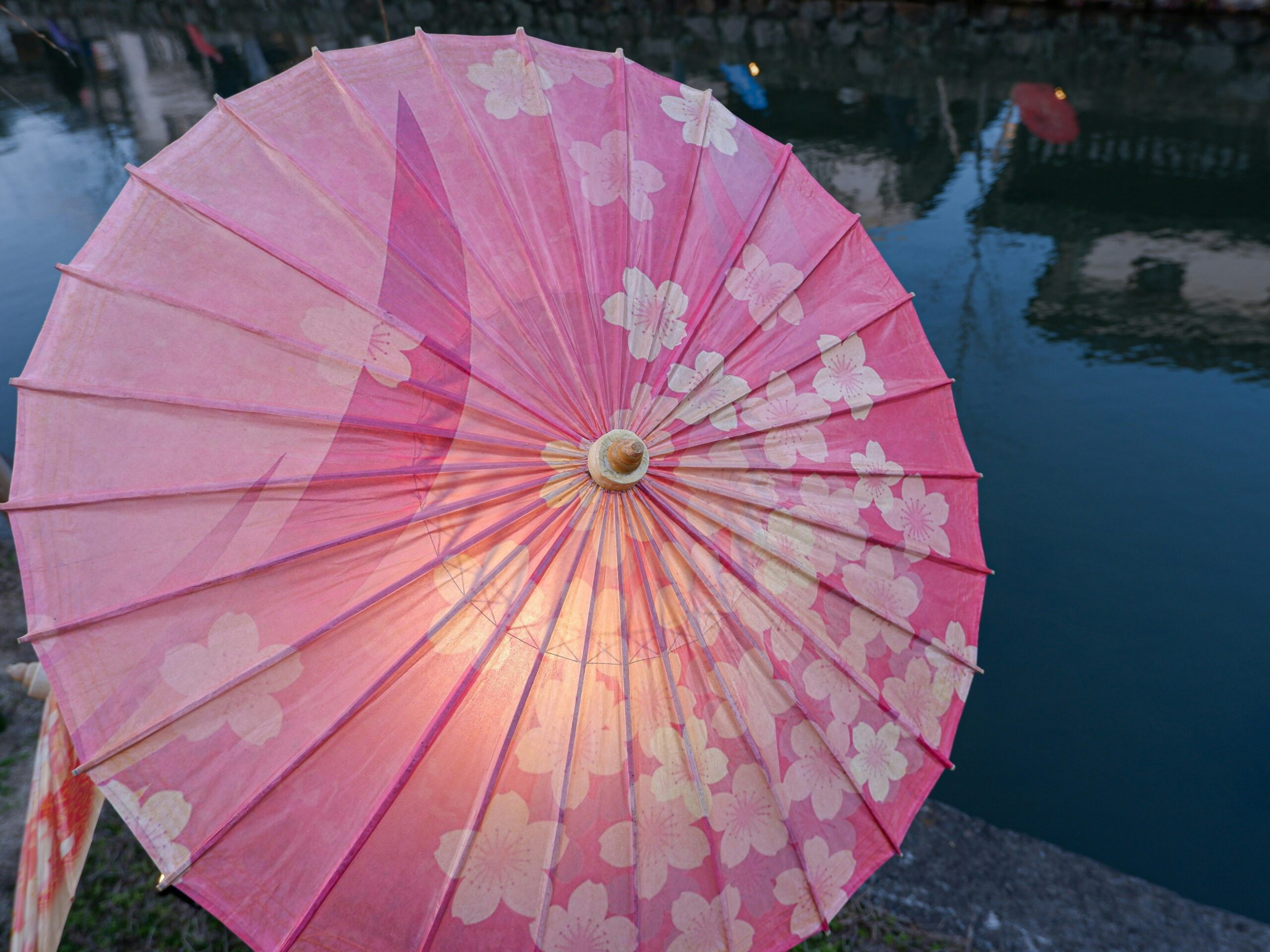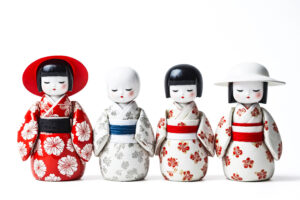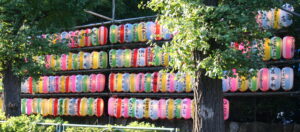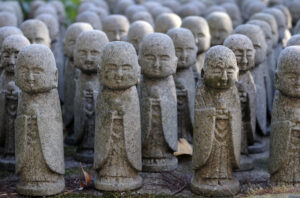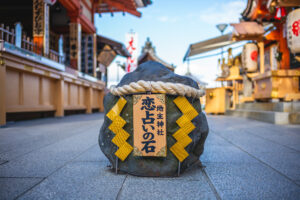In the world of accessories that blend functionality with aesthetics, Japanese umbrellas stand out as a testament to the nation’s rich cultural heritage and meticulous craftsmanship. Known locally as Wagasa, these traditional umbrellas are much more than mere tools for shelter against the weather; they are symbols of elegance, art, and history. As we delve into the enchanting world of Japanese umbrellas, we uncover the layers of tradition, artistry, and cultural significance that make them an indispensable part of Japan’s cultural identity.
Exploring the Elegance of Japanese Umbrellas
Japanese umbrellas are renowned for their exquisite beauty and intricate designs. Unlike their Western counterparts, Wagasa are made from natural materials such as bamboo, wood, and washi (Japanese paper), which lend them a unique texture and appearance. The elegance of these umbrellas is not just in their structure but also in the delicate art that adorns them, ranging from simple, understated patterns to elaborate scenes from nature and mythology. The way they gracefully open and close, coupled with their serene movement in the breeze, adds to their enchanting allure. For many, carrying a Wagasa is akin to holding a piece of art, a statement of sophistication and cultural appreciation.
The History of Wagasa: Japan’s Traditional Umbrella
The history of Wagasa dates back over a thousand years, with their origins deeply rooted in the Tengai era. Initially used by Buddhist monks to protect themselves during their alms rounds, these umbrellas quickly became a status symbol among the aristocracy. Over the centuries, they evolved in design and function, reflecting the changing tastes and technologies of the times. The golden age of Wagasa was during the Edo period (1603-1868), when the umbrella industry flourished, and the designs became more intricate and varied. Despite the advent of Western-style umbrellas, Wagasa has maintained its place in Japanese culture, symbolizing resilience and the enduring appeal of traditional craftsmanship.
The Artistry Behind Japanese Umbrella Making
The creation of a Wagasa is a labor-intensive process that requires the skills of seasoned artisans. Each umbrella is handcrafted with precision and care, often involving over 30 steps that can take several months to complete. The process begins with the careful selection of bamboo for the frame, which is then cut, shaped, and left to dry. The paper, once applied, is treated with oil to make it waterproof, a technique that not only protects but also enhances the natural beauty of the washi. The final product is not just a functional object but a work of art, reflecting the dedication and skill of its maker.
Wagasa vs. Modern Umbrellas: A Cultural Contrast
The stark differences between Wagasa and modern umbrellas highlight a cultural contrast between tradition and convenience. While modern umbrellas are valued for their durability and ease of use, Wagasa are cherished for their aesthetic appeal and cultural significance. The former might be seen as a testament to technological advancement, but the latter represents a connection to history and the natural world. This contrast underscores a broader dialogue about the values and priorities that shape consumer choices in contemporary society and the place of traditional crafts in a modern world.
Preserving Tradition: The Craftsmen of Japanese Umbrellas
The future of Wagasa hangs in the delicate balance between preserving tradition and adapting to modern needs. Today, a dwindling number of craftsmen possess the knowledge and skills required to create these traditional umbrellas. Many of them are working tirelessly not only to keep this ancient craft alive but also to pass it on to the next generation. They face numerous challenges, from sourcing the natural materials needed for construction to competing with mass-produced umbrellas. However, their dedication to their craft ensures that the art of Wagasa making continues to thrive, embodying a living link to Japan’s cultural past.
The Role of Umbrellas in Japanese Ceremonies
In Japan, umbrellas serve as more than just shelter from rain or sun; they play an integral role in various ceremonies and festivals. From the refined movements of the tea ceremony to the vibrant processions of traditional festivals, Wagasa are omnipresent, adding an element of grace and beauty. They are also used in weddings and other rites of passage, symbolizing protection and good fortune for those they cover. The presence of these umbrellas in ceremonial contexts underscores their deep cultural significance and the reverence with which they are regarded in Japanese society.
From Samurai to Geisha: Umbrellas in Japanese Lore
The ubiquity of umbrellas in Japanese history and folklore is a testament to their cultural importance. Samurais were known to carry Wagasa, not only as protection from the elements but also as a symbol of their status and as a potential weapon. Geishas, on the other hand, used them as part of their elaborate dress, each detail of the umbrella carefully chosen to complement their attire and convey subtle messages. The stories and legends that feature umbrellas capture the imagination and illustrate how deeply these objects are woven into the fabric of Japanese culture.
The Global Influence of Japanese Umbrella Designs
Japanese umbrella designs have captured the world’s imagination, influencing artists, designers, and filmmakers across the globe. From the impressionist painters who were fascinated by the elegance and mystery of Wagasa to contemporary fashion where these umbrellas find their place as exotic accessories, their influence is widespread. The blend of aesthetic appeal and craftsmanship resonates with a global audience, making Japanese umbrellas a coveted item not just for their functionality but for their ability to cross cultural boundaries and inspire creativity.
The Symbolism Embedded in Japanese Umbrella Patterns
Each Wagasa tells a story, conveyed through the patterns and colors adorning its surface. These designs are not arbitrary; they are laden with symbolism and meaning, reflecting aspects of Japanese philosophy, nature, and spirituality. Seasonal motifs, such as cherry blossoms for spring or maple leaves for autumn, celebrate the transient beauty of nature, a core tenet of Japanese aesthetics. Other patterns might invoke luck, happiness, or protection, making the umbrella both a talisman and a work of art. This layer of meaning adds depth to the already rich tapestry of Wagasa, inviting those who hold them to ponder the stories they tell.
Facing the Elements: The Durability of Wagasa
Despite their delicate appearance, Japanese umbrellas are remarkably durable. The natural materials and traditional techniques used in their construction ensure that they can withstand the elements, from the sun’s harsh rays to the pouring rain. The washi paper, treated with oil, becomes a strong, water-resistant fabric, while the bamboo frame provides flexibility and strength. This durability is a testament to the pragmatic aspect of traditional Japanese craftsmanship, where beauty does not come at the expense of utility.
Reviving the Art: The Future of Japanese Umbrellas
As the world becomes increasingly digital and automated, there is a growing appreciation for the handmade and the authentic. This shift presents an opportunity for the revival of traditional crafts like Wagasa making. Efforts are underway to innovate and adapt these umbrellas for the modern market, incorporating new designs and materials while preserving the essence of the traditional craft. Workshops and educational programs aim to inspire a new generation of artisans, ensuring that the art of Japanese umbrella making continues to evolve and enchant.
Where to Find Authentic Japanese Umbrellas Today
For those seeking to own a piece of this tradition, authentic Japanese umbrellas can be found in specialized stores in Japan and around the world. Many craftsmen and workshops also sell their creations online, offering a wide range of designs that cater to various tastes and purposes. Buying a Wagasa not only supports the artisans who make them but also helps to keep the tradition alive. Whether used as a functional object or a decorative piece, a Japanese umbrella is a beautiful reminder of the enduring allure of Japanese culture and craftsmanship.
The world of Japanese umbrellas is a captivating blend of elegance, tradition, and artistry. From their historical roots to their role in contemporary culture, Wagasa embodies the spirit of Japanese aesthetics and the nation’s deep respect for craftsmanship. As we look to the future, the preservation and revitalization of this traditional art form is more than about keeping a cultural practice alive; it’s about celebrating the beauty in the everyday and the stories that objects around us can tell. In the folds of a Wagasa, we find not just shelter from the rain but a bridge to the past and a canvas for the future.
